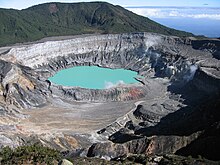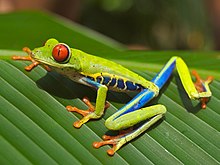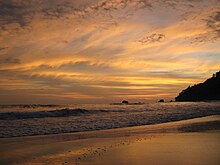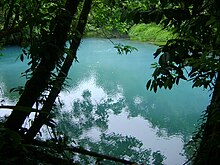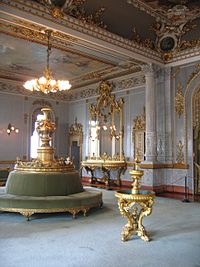
Costa Rica, officially the Republic of Costa Rica, is a country in the Central American region of North America. Costa Rica is bordered by Nicaragua to the north, the Caribbean Sea to the northeast, Panama to the southeast, and the Pacific Ocean to the southwest, as well as maritime border with Ecuador to the south of Cocos Island. It has a population of around five million in a land area of 51,060 km2 (19,710 sq mi). An estimated 333,980 people live in the capital and largest city, San José, with around two million people in the surrounding metropolitan area.

The economy of Costa Rica has been very stable for some years now, with continuing growth in the GDP and moderate inflation, though with a high unemployment rate: 11.49% in 2019. Costa Rica's economy emerged from recession in 1997 and has shown strong aggregate growth since then. The estimated GDP for 2023 is US$78 billion, up significantly from the US$52.6 billion in 2015 while the estimated 2023 per capita is US$26,422.

Central America is a subregion of the Americas. Its political boundaries are defined as bordering Mexico to the north, Colombia to the south, the Caribbean Sea to the east, and the Pacific Ocean to the west. Central America is usually defined as consisting of seven countries: Belize, Costa Rica, El Salvador, Guatemala, Honduras, Nicaragua, and Panama. Within Central America is the Mesoamerican biodiversity hotspot, which extends from northern Guatemala to central Panama. Due to the presence of several active geologic faults and the Central America Volcanic Arc, there is a high amount of seismic activity in the region, such as volcanic eruptions and earthquakes, which has resulted in death, injury, and property damage.

Ecotourism is a form of tourism marketed as "responsible" travel to natural areas, conserving the environment, and improving the well-being of the local people. The stated purpose may be to educate the traveler, to provide funds for ecological conservation, to directly benefit the economic development and political empowerment of local communities, or to foster respect for different cultures and human rights.

Alajuela is a province of Costa Rica. It is located in the north-central part of the country, bordering Nicaragua to the north. It also borders the provinces of Heredia to the east, San José to the south, Puntarenas to the southwest and Guanacaste to the west. As of 2011, the province had a population of 885,571. Alajuela is composed of 16 cantons, which are divided into 111 districts. It covers an area of 9,757.53 square kilometers.

Monteverde is the twelfth canton of the Puntarenas province of Costa Rica. It is located in the Cordillera de Tilarán mountain range. Roughly a four-hour drive from the Central Valley, Monteverde is one of the country's major ecotourism destinations. The area is host to the Monteverde Cloud Forest Reserve and several other natural attractions, which draw considerable numbers of tourists and naturalists.

Manuel Antonio National Park is a small national park in the Central Pacific Conservation Area located on the Pacific coast of Costa Rica, just south of the city of Quepos, Puntarenas, and 157 km (98 mi) from the national capital of San José. It was established in 1972, when the local community sought conservation to prohibit development and destruction of the natural environment. They also protested the beach restrictions on locals by foreign owners. The park has a land area of 1,983 ha and 25,634 ha of water area for a total of 27,587 ha. Despite being one of the smaller Costa Rican parks in land area, Manuel Antonio is the most popular of the 30 national parks in Costa Rica, visited by 4,388,460 people from 2012 to 2022.

Tourism is a growing sector and key to the economy of several regions of Brazil. The country had 6.589 million visitors in 2018, ranking in terms of the international tourist arrivals as the second main destination in South America after Argentina and third in Latin America after Mexico and Argentina. Revenues from international tourists reached US$5.8 billion in 2015, continuing a recovery trend from the 2008–2009 economic crisis.

Tourism in Nicaragua has grown considerably recently, and it is now the second largest industry in the nation. Nicaraguan President Daniel Ortega has stated his intention to use tourism to combat poverty throughout the country.

The contribution of travel and tourism to GDP was US$5,880.3bn in 2016. Tourism generated 556,135 jobs in 2016. Foreign tourist visits were predicted to have risen from 0.6 million in 2007 to 4 million in 2017. Responsible tourism became a peremptory need for Colombia because it minimizes negative social, economic and environmental impacts and makes positive contributions to the conservation of natural and cultural heritage.
Prostitution in Costa Rica is legal. Costa Rica's legal system is based on Roman law rather than common law, and so for prostitution to be illegal it would have to be explicitly stated as such in a penal code, and it is not. Nevertheless, many of the activities surrounding it are illegal, as the law forbids promoting or facilitating the prostitution of another, and therefore pimping, brothels, or prostitution rings are illegal. Prostitution is common and is practiced openly throughout the country, particularly in popular tourism destinations.
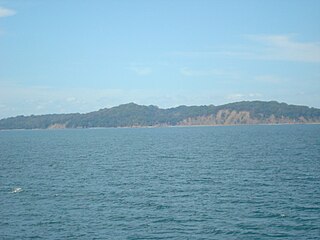
San Lucas Island National Park is an island located off the Pacific shore of Costa Rica in the Gulf of Nicoya. It is part of the Puntarenas district in the canton and province of the same name.
The Costa Rican Tourism Board is the government agency responsible for promoting sustainable tourism in Costa Rica. Originally the agency was created by decree in 1931 as the National Tourism Board, and by a law approved on 9 August 1955, the agency became the Instituto Costarricense de Turismo (ICT).

Pejibaye is a district of the Jiménez canton, in the Cartago province of Costa Rica.

Ecotourism is a key component of the tourism industry in Costa Rica. By the early 1990s, Costa Rica became known as the poster child of ecotourism. The country is among many developing nations that look to ecotourism as a way of cashing in on the growing demand for this popular trend of travel.

Tourism in the Dominican Republic is an important sector of the country's economy. More than 10 million tourists visited the Dominican Republic in 2023, making it the most popular tourist destination in the Caribbean and putting it in the top 5 overall in the Americas. The industry accounts for 11.6% of the nation's GDP and is a particularly important source of revenue in coastal areas of the country. The nation's tropical climate, white sand beaches, diverse mountainous landscape and colonial history attracts visitors from around the world. In 2022, the nation's tourism was named the best-performing nation post-pandemic with over 5% visitors more in comparison to pre-pandemic levels in 2019.
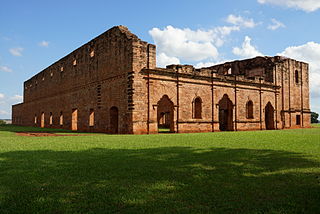
Tourism in Paraguay employs only 9,500 people, according to data from 2010.
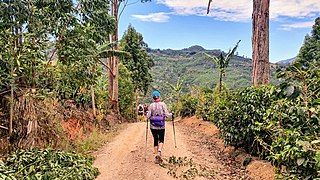
The Camino de Costa Rica is a 280 kilometres (170 mi) long hiking trail across Costa Rica. It runs from the Atlantic Ocean, the southernmost part of the Tortuguero canals, up the mountain and through indigenous territory near the Barbilla National Park and through valleys and mountain ranges of the central region of the country, just south of the Turrialba and Irazu volcanoes and through the Los Santos coffee region down to the Pacific coast in Quepos.

María Amalia Revelo Raventós was a Costa Rican businesswoman and government minister. She served as Minister of Tourism from 2018 to 2020 and led the Instituto Costarricense de Turismo.
